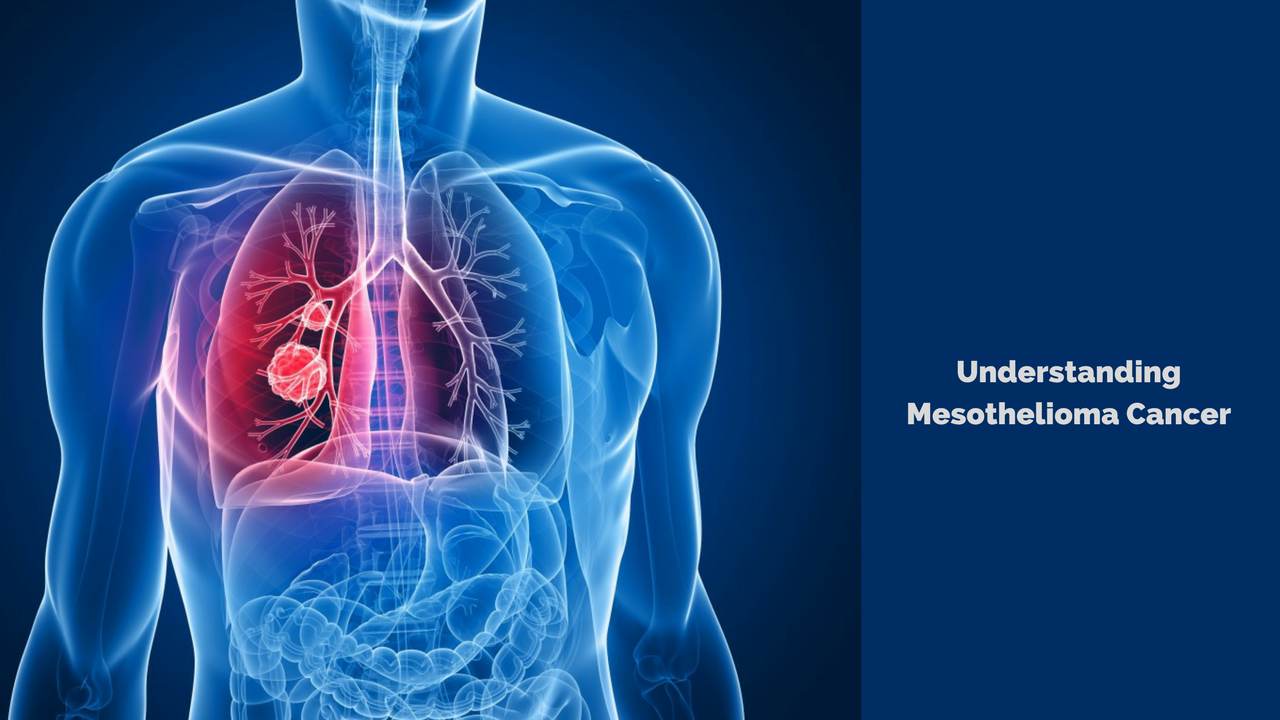Understanding Mesothelioma Cancer
This post was last updated on December 27th, 2024

What is Mesothelioma Cancer?
Malignant cancer which is also known as Malignant Mesothelioma, is a rare form of cancer, which develops from cells of the mesothelium, the protective lining covering many of the internal organs of the body, i.e. the lungs, of the people who are mostly exposed to asbestos. However, effectual treatments are also available to ease symptoms and improve your prognosis.
This cancer commonly affects the thin protective membrane which surrounds the lungs, heart and abdominal cavity. Although asbestos uses are declined effectively in recent decades, hence the cases of malignant mesothelioma remain stable. The disease can lead anywhere from 20 to 50 years after getting exposed to asbestos before it shows its usual symptoms and only an oncologist can do the precise diagnosis. Although, there is no such cure for the disease and the prognosis is consistently poor, researchers and the experts have discovered a significant progress in last few years in understanding and analyzing this cancer and cultivating new treatment ideas and techniques with alternative therapies.
How Asbestos cause Mesothelioma Cancer?
Mesothelioma normally emerges after prolonged exposure to asbestos in the workplace like, industrial plant settings, shipyards, old houses, auto repair shops, schools and public buildings and shops. The cancer usually takes a long-term exposure to put someone at cancer’s risk, however, short-term and one-time exposures also causes Mesothelioma Cancer in very rare scenarios. The microscopic asbestos fibers are when inhaled or swallowed, the human body faces difficulty to destroy them or get rid of them leading to cancer. Since last decades, the fibers cause biological alterations resulting in inflammation, disfiguring and genetic damages. The most exposure prone area to these fibers is the lining of the lungs which is known as pleura, however the fibers also can get trapped in the lining of the abdominal cavity also called as peritoneum. Once the fiber causes biological damage, hence, the platform is set for the long latency period for the development of malignant mesothelioma.
Mesothelioma Cancer Types
Pleural malignant mesothelioma is considered as the most common type of this disease, which represents about 75 percent of mesothelioma cancer cases. Peritoneal comes in the second leading common type, which represents of about 10 to 20 percent of cases. However, approximately 1% of cases are of the pericardial type. Another rare variety called as testicular mesothelioma consitutes less than 1% of cases.
Pleural- This type is developed in the lining of the lungs. An increased exposure rate leads to improve treatment methods and survival rates.
Peritoneal- This variety gets develop in the lining of the abdominal cavity, peritoneal cancer responds significantly to a combination of surgery and heated chemotherapy procedure.
Pericardial- Usually emerges from the lining of the heart, pericardial cancer is considered as the most challenging for treatment because of the location of tumors.
Common Symptoms
The most common symptoms of malignant mesothelioma cancer are so tapid that few people can notice or recognize them, and many even don’t experience any of the symptoms until last stages of the cancer. The most common ones are:
- Fatigue
- Pain near the Tumor
- Short Breathing
- Weight Loss
- Fluid Buildup
- Bowel Obstruction
Fatigue and mild pain around the tumor shows up in early stages. The late-stage symptoms are quite easy to notice provoking to visit the doctor. These late-stage signs can include shortness of breathing, sever pain near the tumor, weight loss, fluid buildup in lungs or bowel obstruction. However, the effectual therapies can alleviate symptoms, and there are some treatments like talc pleurodesis can also prevent symptom reappearance.
Diagnosing Methods
All the patients have a unique way to a diagnosis, but the most crucial factors to an exact and precise diagnosis are the imaging scans and biopsies. Doctors use several tests to diagnose mesothelioma cancer.
- Imaging Scans- Most patients, at the initial stage of this treatment endure a basic chest X-ray for checking any kind of abnormalities. And, if abnormal growth is detected, the doctor will recommend for a more detailed imaging scan like a PET scan, MRI or CT scan.
- Biopsies- If cancer gets detected, a biopsy is mostly recommended in which a tissue sample is collected for confirming the existence of mesothelioma cells.
- Blood Tests- Blood test are also preferred, but they don’t confirm the presence of mesothelioma cells. However, the research and development is still going on to determine if blood tests can help in early diagnosis for the initial risks of this cancer.
- Staging- There are usually five systems that are used by the doctors for the staging of pleural cancer. Older techniques created by Drs. Butchart and Sugarbaker, were not helpful to classify tumors with tumor node metastasis (TNM) descriptors. Hence, International Mesothelioma Interest Group (IMIG) discovered a detailed IMIG staging technique in 1995.
Recommended: 10 Indian Spices That Can Fight And Prevent Cancer
Mesothelioma Cancer Treatment
Treatment systemss for mesothelioma include surgery, chemotherapy and radiation therapy. Many doctors recommend for combining two or more of these treatment techniques, this process called as multimodal therapy. However, the clinical attempts of this treatment has resulted in improved survival rates. Palliative treatments are opted to ease symptoms, are quite usual for the patients of all stages, and experimental therapies, like immunotherapy show development for the future. Mmoreover, many survivors brag out less traditional substitute treatments for assisting them to live longer.
Surgery- The curative surgery is preferred for early stage victims, while palliative surgery is best for late-stage cancer patients helping them to ease symptoms.
Chemotherapy- Chemotherapy is a regular and approved treatment to execute malignant cells, shrinking the tumors to prevent the reappearance and relieve symptoms.
Radiation- Radiation therapy is recommended alone or in combination with chemotherapy process or with surgery to wipe out cancer cells, managing tumors to prevent tumor seeding.
Also read: How to Reduce the Risk of Cancer?
Recommended For You
Ensure Your Child Has Everything They Need With These Tips
Priyadarshini Muduli
A full time passionate writer with imperishable determination to bring healthy, smart and pragmatic changes individually and socially. Concentrate especially on lifestyle, life and personal improvement, relationships, mental health and behavior, viral issues and literature based subjects.




